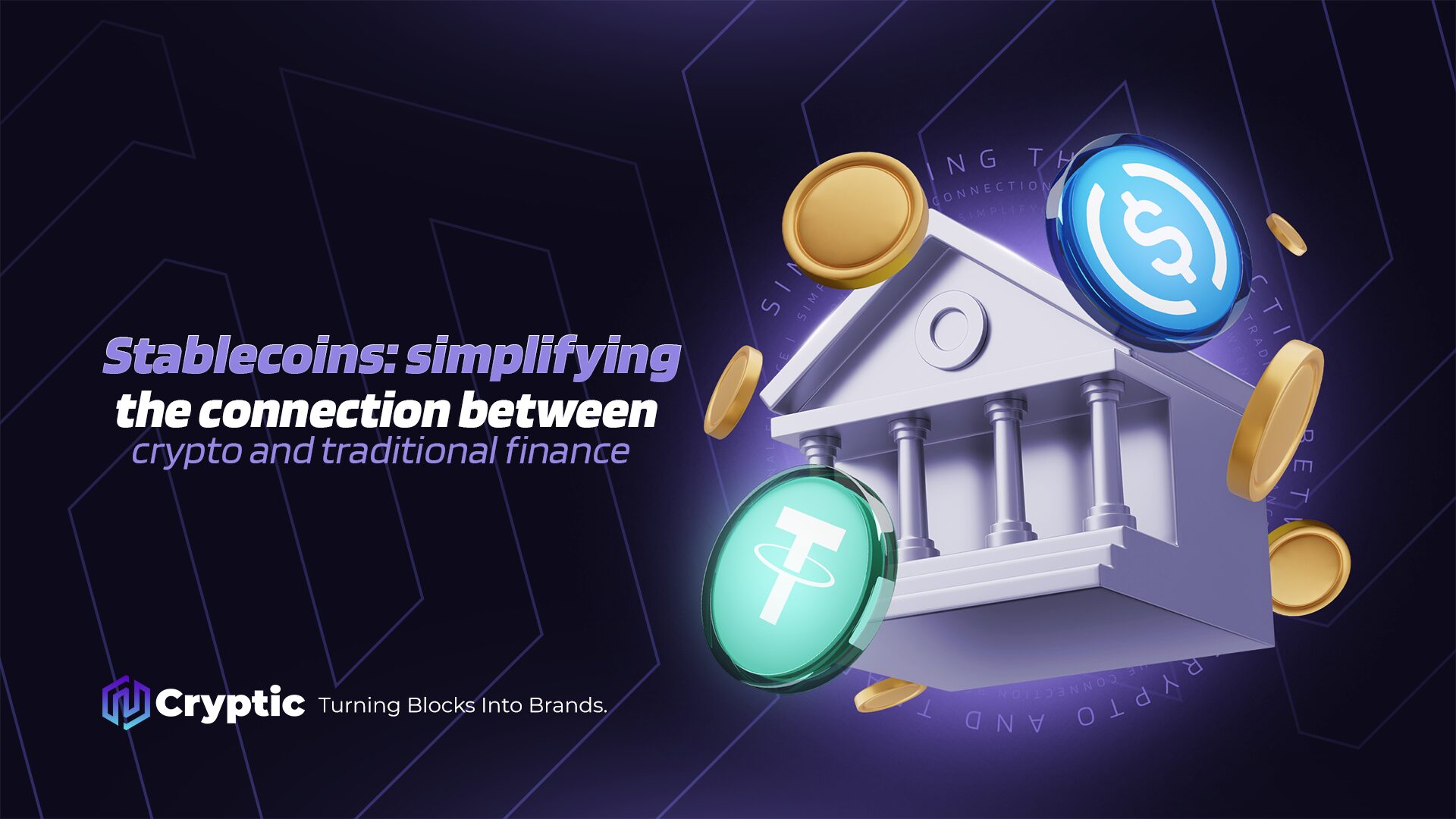Stablecoins are cryptocurrencies that have their value pegged to stable assets, such as the dollar or other traditional currencies. This means that, unlike Bitcoin or Ethereum, which can have significant price fluctuations, stablecoins maintain stability that helps avoid large swings. Because of this, they act as a bridge between the world of cryptocurrencies and the traditional financial system, making it easier to use crypto in everyday life.
This stability makes stablecoins an important tool for payments, international transfers, and other financial operations within the crypto universe, offering speed and lower costs. Additionally, they attract more people to the market, as many investors look for a way to enter the crypto world without taking on the risk of sudden price changes.
How stablecoins work

There are basically three main types of stablecoins, each with a different way of maintaining a stable value. Fiat-backed stablecoins, such as the US dollar, are the most common. They have a reserve equivalent to the number of coins in circulation, meaning that for every stablecoin issued, there is a dollar held somewhere, like in a bank or fund, ensuring the value stays close to the real asset.
Crypto-collateralized stablecoins use other cryptocurrencies as collateral. Since these assets can also be volatile, these stablecoins usually require a larger reserve than the amount issued, to protect against sudden drops in the collateral’s price. This mechanism creates a safety margin that helps maintain the stablecoin’s stability even in unstable markets.
Finally, there are algorithmic stablecoins, which are not backed by real assets but use algorithms and smart contracts to control the coin’s supply. When the price rises too much, the system issues more coins; when it falls, some are removed from circulation. This is a more complex and risky approach that aims to ensure stability through automatic and decentralized mechanisms.
Each of these models has its pros and cons, but they all aim for the same goal: to offer a digital currency that is reliable, stable, and easy to use. Understanding these different types is essential for anyone who wants to dive deeper into the crypto world and take advantage of the opportunities stablecoins bring to the future of finance.
The importance of stablecoins for the crypto ecosystem

Stablecoins play a fundamental role within the crypto ecosystem, acting as an “anchor” amid the high volatility typical of traditional cryptocurrencies. Because their value is tied to stable assets, they provide a safe way for people to protect their capital from sharp market swings without leaving the digital environment. This facilitates everything from everyday payments to fast, low-cost international transfers, making stablecoins a practical and efficient tool.
Moreover, stablecoins are essential for the growth of decentralized finance, or DeFi. Many financial applications on the blockchain depend on them to enable loans, asset exchanges, and other operations with security and stability. Without stablecoins, these platforms would struggle with the volatility of traditional cryptos, making services less reliable and accessible. They help create a more predictable environment, attracting more users and investors to the crypto market.
But the importance of stablecoins goes beyond the crypto world. They represent an important step in integrating the traditional economy with the digital world, facilitating blockchain adoption by people and businesses worldwide. With stablecoins, it’s possible to make fast, transparent, and secure transactions even in regions with less developed financial systems. In this way, stablecoins open new economic opportunities, promote financial inclusion, and drive global innovation.
The role of stablecoins in the future of finance
Stablecoins have already proven their value as an important link between the traditional financial world and the digital universe. By offering stability and ease in transactions, they allow both individuals and businesses to leverage blockchain technology’s advantages without giving up the security and predictability needed in daily life. This reinforces their strategic role in the future of finance, where the convergence of old and new systems is increasingly inevitable.
However, for stablecoins to grow safely and sustainably, proper regulation and constant innovation will be essential. Clear rules help protect users and strengthen market confidence, while technological advancement will enable the development of increasingly efficient and accessible solutions. In this way, stablecoins are poised to become a key piece in building a more modern, inclusive, and globally connected financial system.



